Offline
I was interested to read about someone else having a similar problem on a TR6 but mine is, ummmm well different I think.....
I just rebuilt the rocker assembly and installed it today but I could not adjust the valves and the engine was very, VERY hard turn by hand. I installed a rebuilt head a while ago, I got the head used, it had been previously surfaced and "ported" (the person I bought it from was a racer so it was kinda "tricked out" already). I am not sure how much had been removed, it was flat according to my machine shop so we went on ahead and rebuilt it and only vey lightly resurfaced the head, I did not measure it and at the time I had the work done I didn't know what I know now, darn it! Today I did a "rough" measurement between the old head and the new one and there is about a .066 mm difference between the two. It makes sense I am thinking, and pretty reasonable to believe I need to shorten the push rods. Not sure how I am going to go about doing that so any advice is appreciated on that topic.
The other option I have is to purchase new ones, which I will probably need to shorten as well... this may be a good plan based upon all the work that has been done on the head already; First, my original push rods are 5/16", although they are in good shape, according to one supplier, it is better to use 3/8" diameter pushrods since the originals are considered "weak". Second, I did install upgraded springs, valves and guides when I rebuild the head, so stronger is a good idea and will avoid or at least theoretically minimize the occurrence of a potential MAJOR problem.
What suggestions and advice do you all recommend? Here are some pictures of the situation. Thank you all very much!
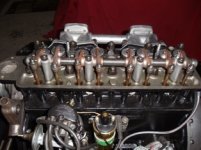
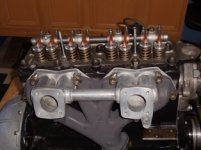
I just rebuilt the rocker assembly and installed it today but I could not adjust the valves and the engine was very, VERY hard turn by hand. I installed a rebuilt head a while ago, I got the head used, it had been previously surfaced and "ported" (the person I bought it from was a racer so it was kinda "tricked out" already). I am not sure how much had been removed, it was flat according to my machine shop so we went on ahead and rebuilt it and only vey lightly resurfaced the head, I did not measure it and at the time I had the work done I didn't know what I know now, darn it! Today I did a "rough" measurement between the old head and the new one and there is about a .066 mm difference between the two. It makes sense I am thinking, and pretty reasonable to believe I need to shorten the push rods. Not sure how I am going to go about doing that so any advice is appreciated on that topic.
The other option I have is to purchase new ones, which I will probably need to shorten as well... this may be a good plan based upon all the work that has been done on the head already; First, my original push rods are 5/16", although they are in good shape, according to one supplier, it is better to use 3/8" diameter pushrods since the originals are considered "weak". Second, I did install upgraded springs, valves and guides when I rebuild the head, so stronger is a good idea and will avoid or at least theoretically minimize the occurrence of a potential MAJOR problem.
What suggestions and advice do you all recommend? Here are some pictures of the situation. Thank you all very much!



 Hey there Guest!
Hey there Guest!
 smilie in place of the real @
smilie in place of the real @
 Pretty Please - add it to our Events forum(s) and add to the calendar! >>
Pretty Please - add it to our Events forum(s) and add to the calendar! >> 

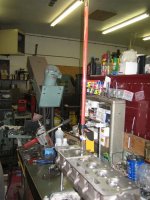
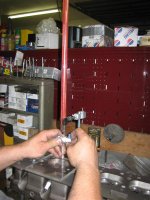
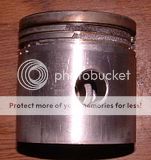
 A friendly reminder - be careful what links you click on here. If a link is posted by someone you don't know, or the URL looks fishy, DON'T CLICK. Spammers sometimes post links that lead to sites that can infect your computer, so be mindful what you click.
A friendly reminder - be careful what links you click on here. If a link is posted by someone you don't know, or the URL looks fishy, DON'T CLICK. Spammers sometimes post links that lead to sites that can infect your computer, so be mindful what you click.